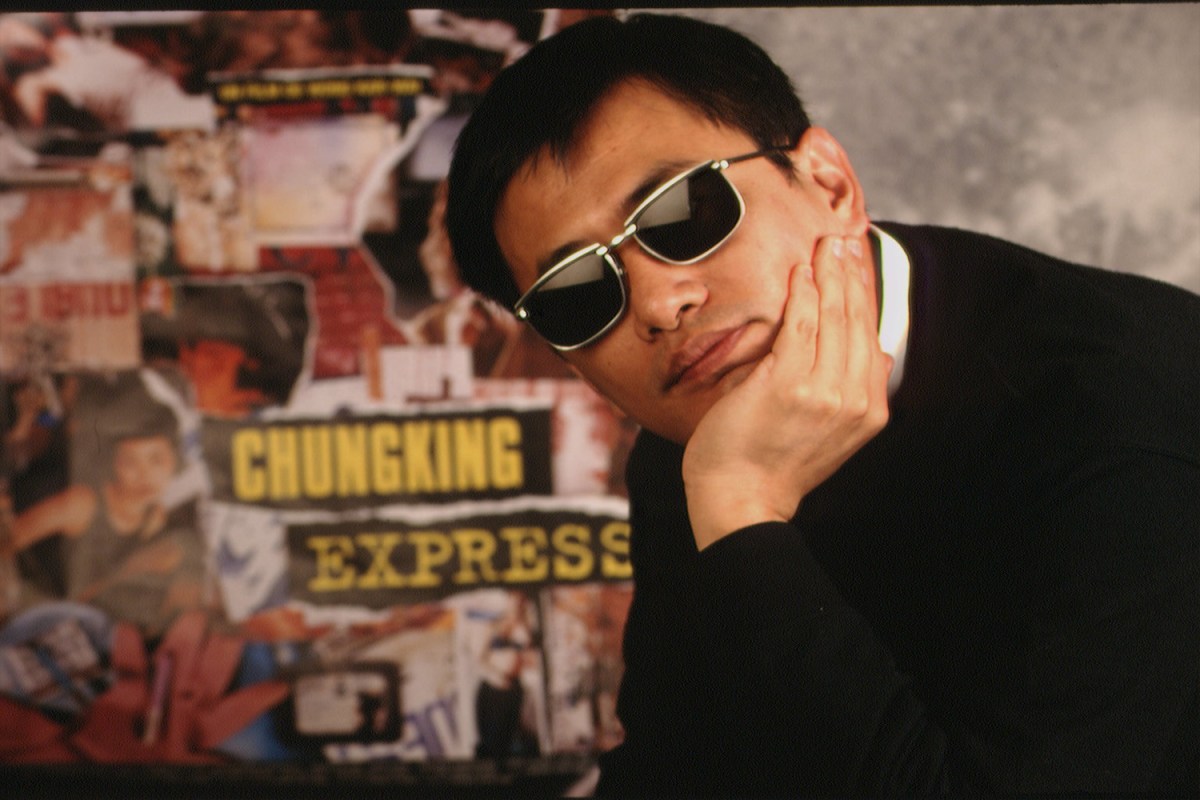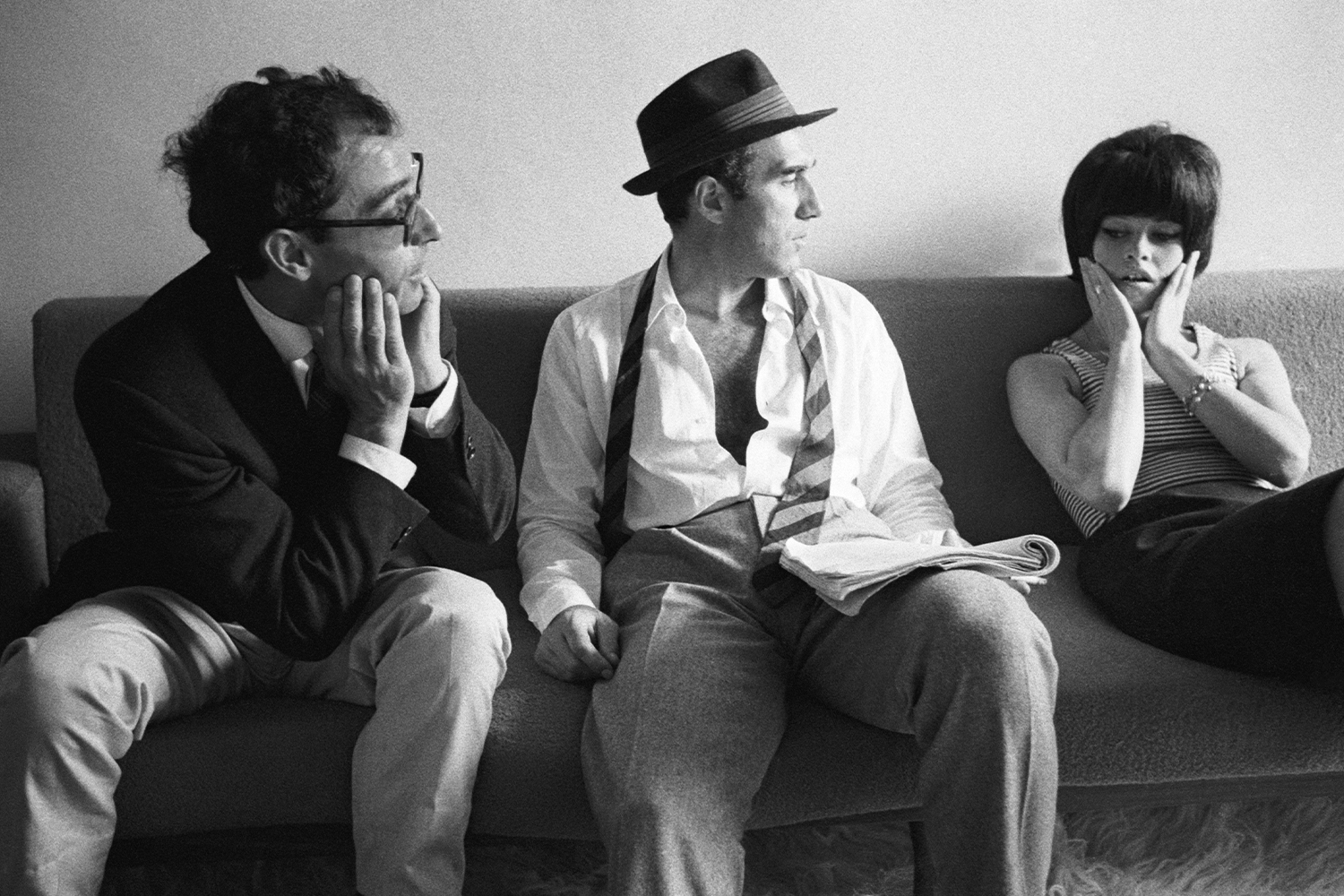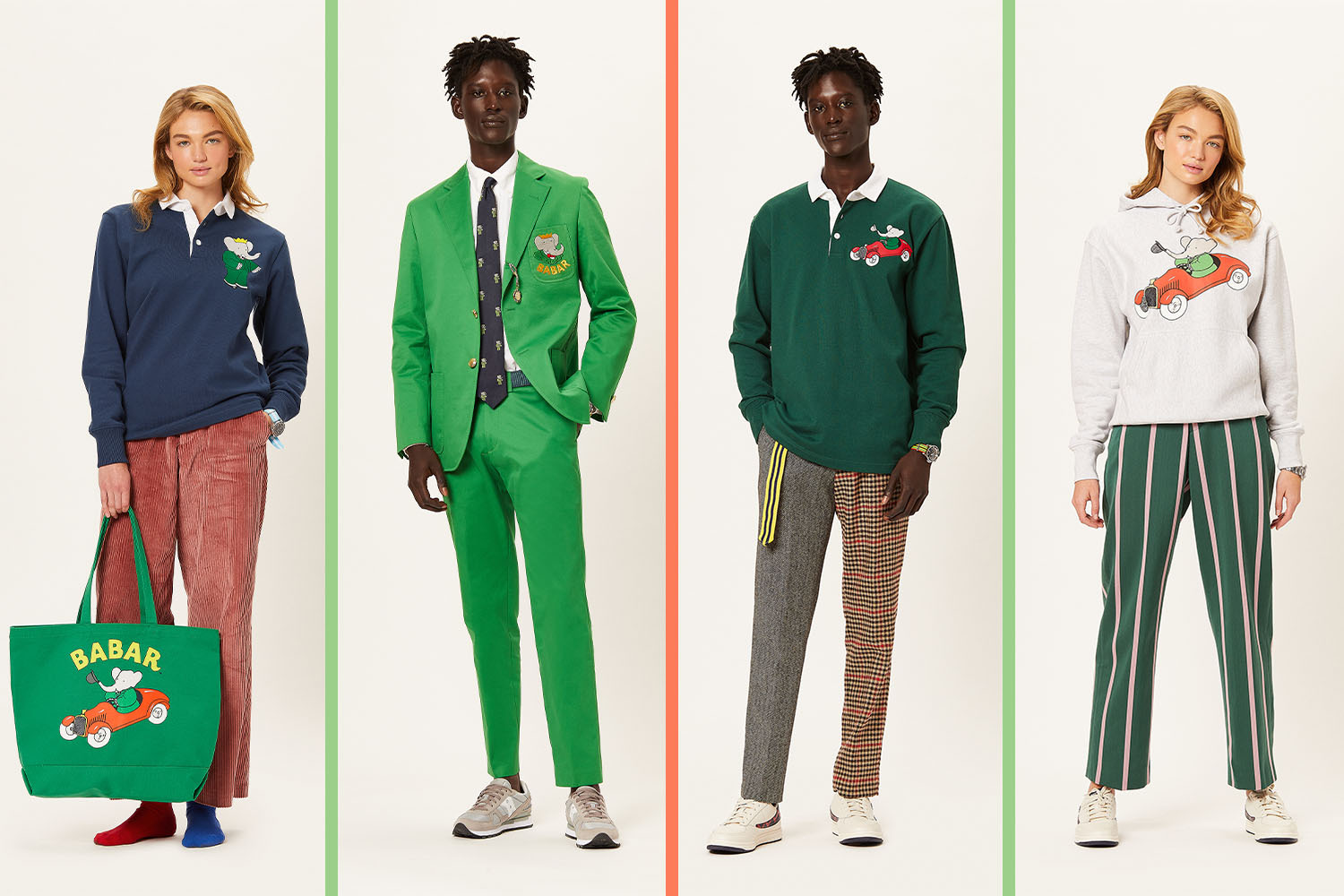Wong Kar-wai isn’t your conventional film director. Across a career of over 30 years (and counting), not once has he prioritized a script. Sure, it’s there — always in a nonlinear narrative — but Wong’s knack for directing a film isn’t solely down to his disproportioned plots. Rather, it’s down to every other surrounding detail: genuinely beautiful cinematography (dominated by contrasts and heavily saturated colors), atmospheric music and an emotionally intense air that always manages to weave its way between his leading characters. Characters who are always dressed immaculately.
Hong Kong has always been the backdrop for Wong. His critical success blossomed in the nineties — the transitioning decade for both colonialism and industrialism in China’s metropolitan city. With respect to a changing societal landscape, Wong adopted a spiritual tendency on screen, and a key ingredient to the success of this was the way in which he dressed his characters. Men were frequently clad in simple (but rest assured, well-crafted) tailoring: single-breasted twill suits, crisp collared shirts, silk ties, car coats and leather shoes. Uniforms were occasionally relaxed depending on the nature of the film, but they still held an undeniable elegance, and matched with an avant-garde visual, Wong quickly cultivated a distinct coolness for men in Hong Kong.
That point, most obviously, is clear in his 2000 feature In the Mood for Love, released twenty years ago this month. Navigating the relationship between a man and a woman after both discover their spouses are having an affair, it quickly gained attention at the Cannes Film Festival and ended up being his most acclaimed film release to date. Twenty years on, the style of its leading man looks just as timeless. So to celebrate this milestone anniversary, we’ve decided to look back on Wong’s cinematic world through a lens of style. Herewith, all the essential lessons to take from his coolest leading male characters.
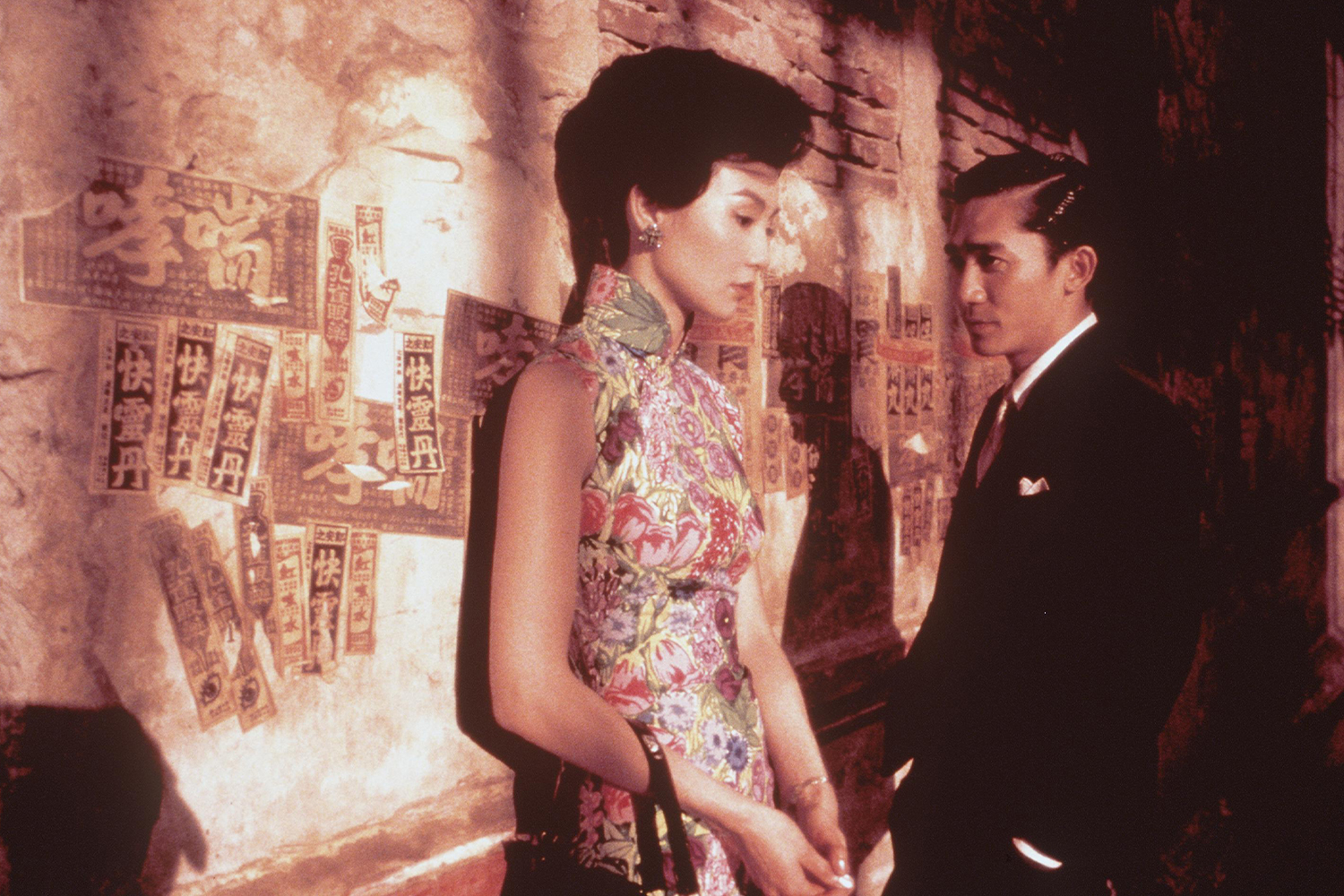
Chow Mo-wan in In The Mood for Love (2000)
First up, In the Mood for Love. It’s Wong Kar-Wai’s most acclaimed feature, navigating the relationship between a man and a woman after both discover their spouses are having an affair. Tony Leung won Best Actor at the Cannes Film Festival for his leading role (the first Hong Kong star to receive the award). Of course, that was down to his acting, but his on-screen wardrobe certainly didn’t hurt his success. His character, Chow Mo-wan, is a journalist, and his knack for noticing life’s details is reflected in his tailoring, which is very simple but very well considered. Single-breasted suits take center stage (cut in twill and colored in either black or grey), and they’re consistently layered over white button-down shirts and printed satin ties. It’s quite prim and proper, yes, but the elegance and charm of Leung’s character brings an undeniable coolness to the way he carries these clothes. His top styling tip: fasten only the top button of your blazer to show off your magnificent tie.
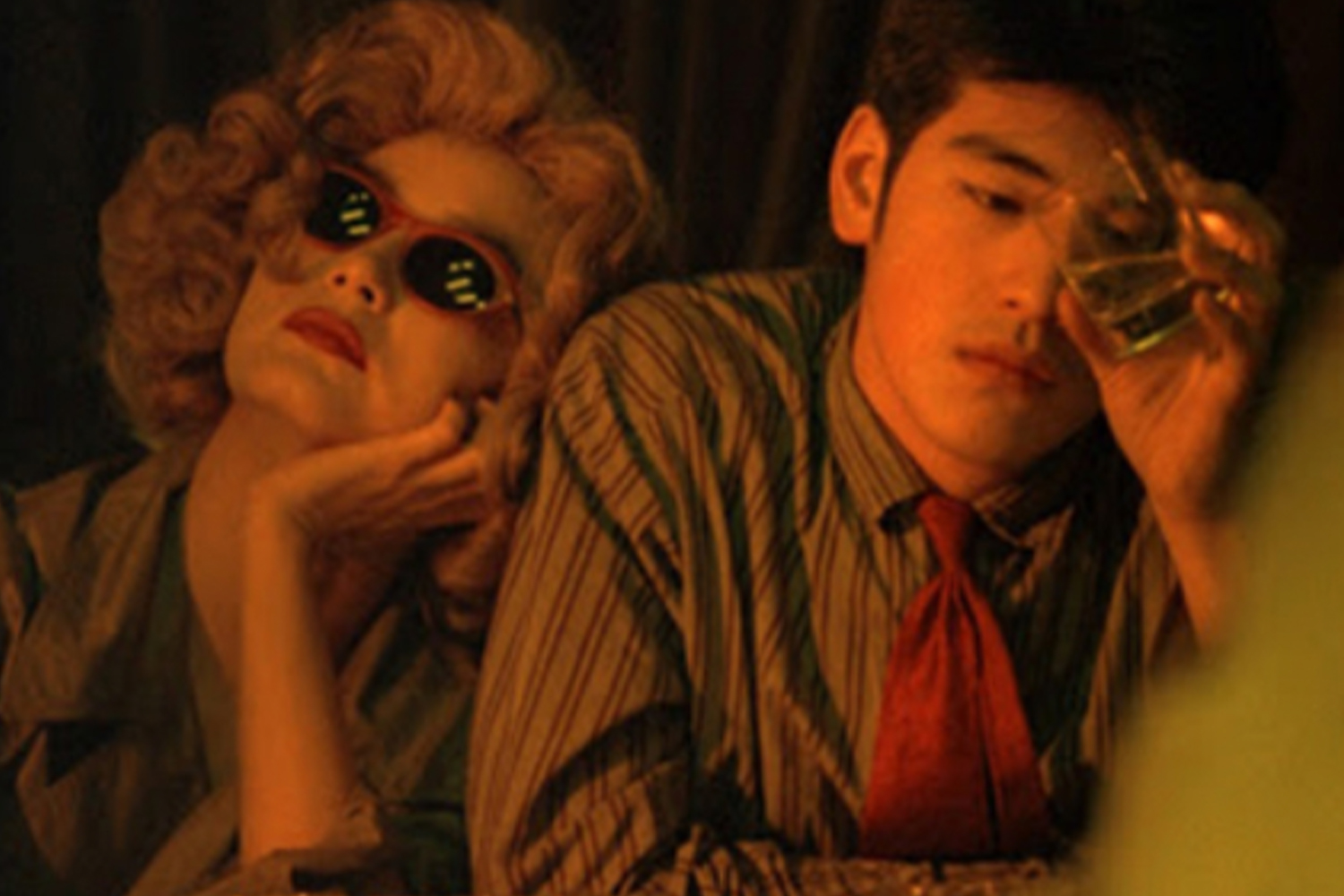
He Zhiwu in Chungking Express (1994)
Despite the often turbulent nature of his narratives, Wong Kar-wai likes to keep the style of his characters extremely sophisticated. Case in point: He Zhiwu, the young policeman who falls in love with a mysterious underworld woman in Wong’s 1994 feature Chungking Express. Played by Takeshi Kaneshiro, Zhiwu’s fall into a lovesick soirée develops over frequent visits to a late-night restaurant which, in true Wong style, is captured through dreamlike cinematography. That’s a faithful filter to top Zhiwu’s outfit choice: a narrow striped shirt (quite Ivy style looking, which has historically been a big influence for China’s tailoring landscape) complete with a block red tie and dusty beige car coat. That finishing layer effectively diffuses the pop of the bright colors featured underneath, giving an overall result that looks sharp, smart and — from a sartorial point of view – really refreshing. Not a bad outfit to imitate this coming winter.
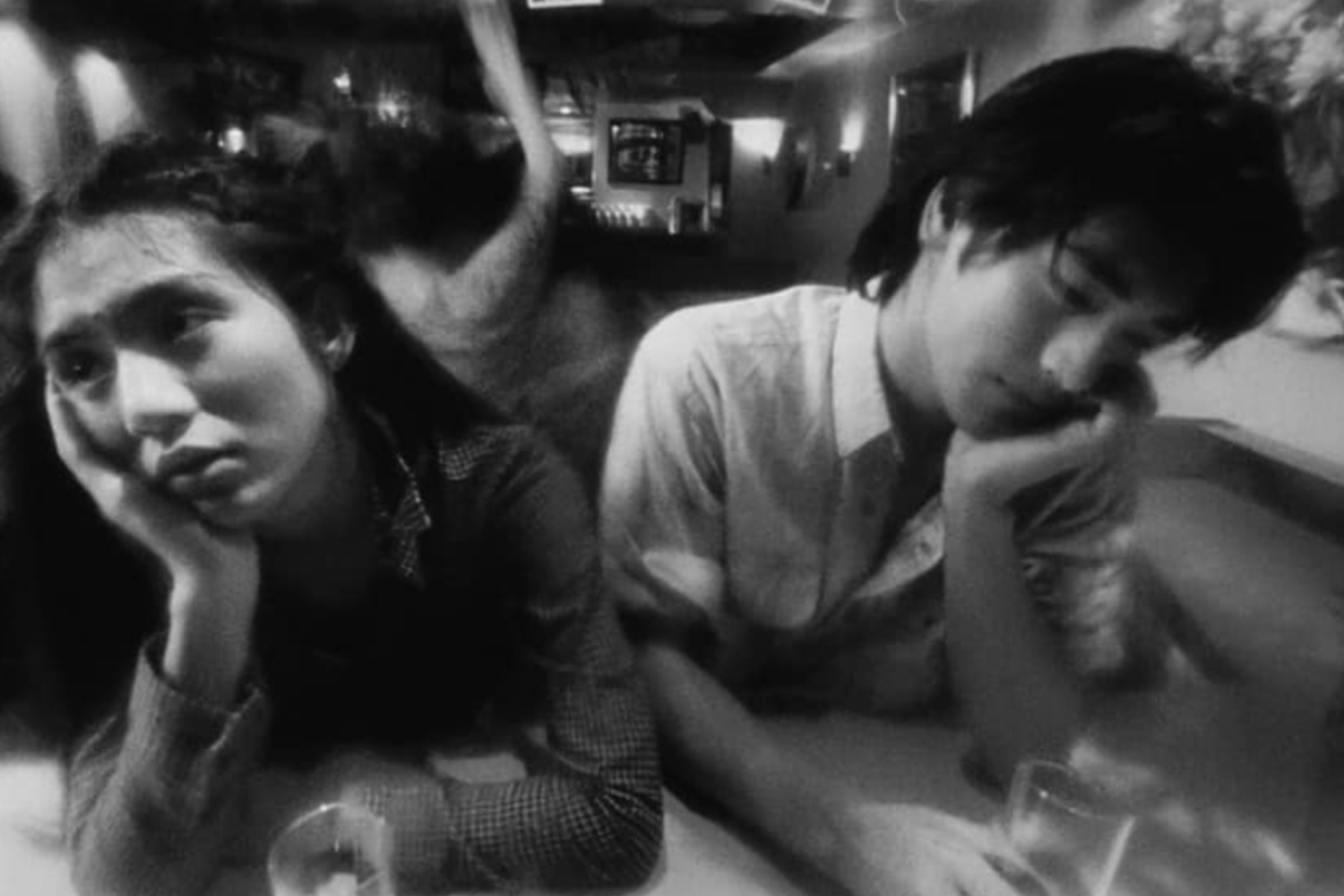
He Zhiwu in Fallen Angels (1995)
If there’s one lesser-known film by Wong Kar-wai we advise you watch, it’s his 1995 romantic drama Fallen Angels: the sequel to Chungking Express which was shot entirely at night. Considering those after hours, it has a distinctly darker feel to it, and that certainly shows in its leading man: once again Takeshi Kaneshiro. He first appeared on screen in a subtle Ivy style, but this time around he switches to some serious casual pieces: striped zip-up fleeces, graphic T-shirts (shoutout to the black and white one emblazoned with a bunch of letters), baggy checked shirts and dirty white jeans. It’s a killer wardrobe, and Kaneshiro pulls it off nicely thanks to his brazen personality. This film is not one for the faint-hearted, but we highly recommend it. Especially if you’re looking for some inspiring items to update your off-duty outfits with (God knows we’re used to them this year).
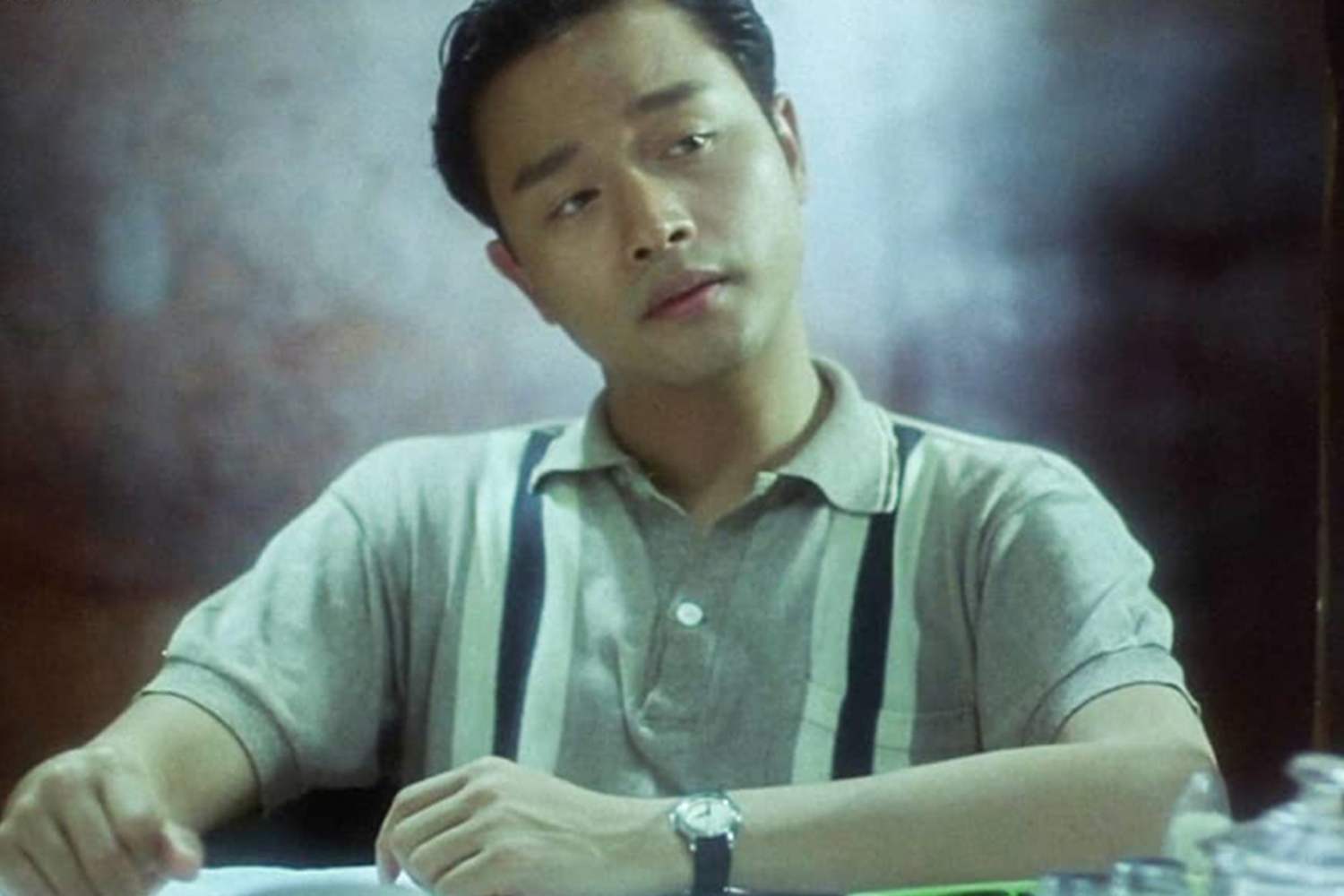
Yuddy in Days of Being Wild (1990)
Released in 1990, Days of Being Wild was Wong’s first major success in cinema. Set in the 1960s, it follows the story of Yuddy, a disillusioned and immoral young man who embarks on a search for his birth mother — landing in a pretty chaotic relationship with a lovelorn woman along the way. It’s 100 minutes of intensity, but Yuddy’s wardrobe certainly makes you feel a bit more at ease. Why? Because he has the best collection of upper-half layers known to man: striking white vest tops, Italian-style knits and preppy polo shirts — the one shown above being our favorite from the film. Source one similar from Style & Classics, a British archive run by designer Scott Fraser Simpson whose knowledge of Italian knitwear is second to none. Layer this over a white T-shirt à la Yuddy, tuck it into some tailored trousers or straight-cut jeans (depending on the occasion) and complete the look with a (slightly battered) pair of black leather boots.
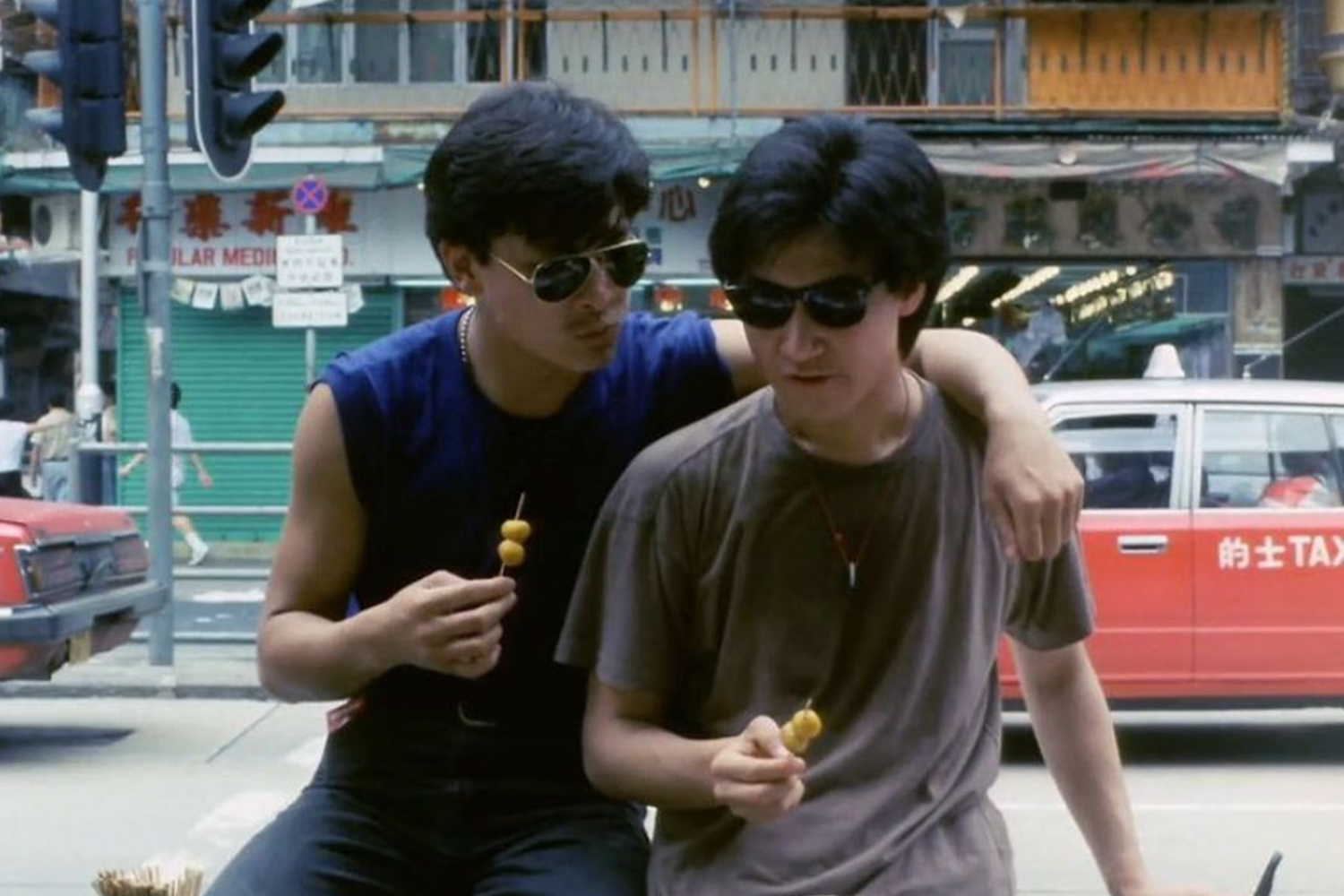
Wah in As Tears Go By (1988)
We’ll finish with the first. As Tears Go By was Wong’s directorial debut starring Maggie Cheung and Andy Lau, and it’s often compared by critics to Martin Scorsese’s Mean Streets. Lau plays Wah, a mob enforcer whose desire to leave the field is complicated by the troubles of his problematic younger brother. Wah has got a lot on his plate throughout, so he doesn’t think too much about his style, but that, in fact, is the key factor in why it looks so effortlessly cool. Basics dominate both his and his brother’s wardrobes: leather jackets, white vests, white tees, black jeans, black boots and loads of stylish accessories in between (we’re especially into the jet black aviator shades). Wong certainly kicked off his career with confidence in his character’s clothing; simple, sophisticated and most certainly self-assured, it’s a super easy uniform to recreate. We suggest you do so, stat.
This article was featured in the InsideHook newsletter. Sign up now.
